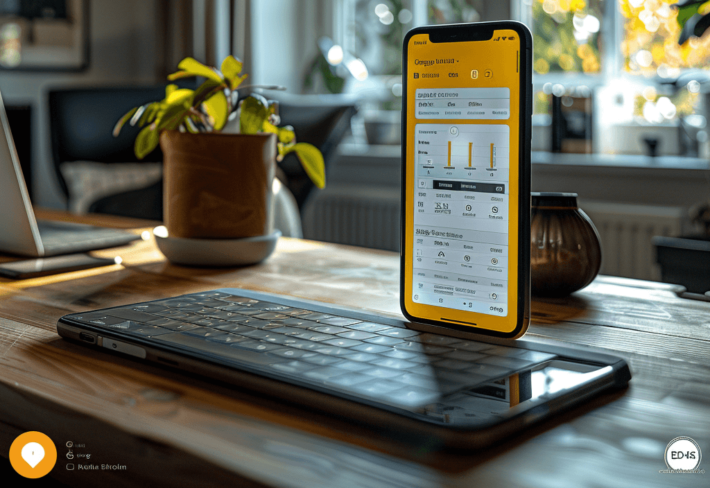Applicant Assessment Tools: What’s The Ultimate ROI of Them in Recruitment?

As competition for international talent increases, the need to maximize recruitment process efficiency and effectiveness takes center stage. Applicant assessment tools are rapidly becoming core technologies that automate critical tasks involved in hiring programs, enhance the candidate experience, and provide actionable insights that may foster new recruiting strategies.
But how can firms ensure they realize maximum value from the ROI on these tools? This blog will help you understand how applicant assessment tools can increase your recruitment ROI by first understanding the key metrics and walking through one to calculate the business case for your system.
- How tools for applicant assessment ensure maximum ROI
- Identifying Metrics to Measure ROI of Assessment Tools
- Steps for Calculating ROI of the Applicant Assessment Tools
- Advanced Features to Look For That Increase ROI
- 1. Automated Candidate Screening and Ranking
- 2. Social Media and Job Board Integration
- 3. Mobile Optimization for Candidate and Recruiter
- 4. Career Pages and Application Processes configurable to your needs
- 5. Analytics and Reporting Tools
- 6. Capabilities in Artificial Intelligence and Machine Learning
- 7. Onboarding Integration
- Transform Your Recruitment Strategy
How tools for applicant assessment ensure maximum ROI

Applicant assessment tools maximize return on investment by reducing time-to-hire and cost-per-hire in a workforce, all while improving the quality of hires.
As these tools automate the filtering process for a candidate’s first assessment, they work much faster to shortlist suitable applicants and alleviate much of the workload from human resources.
This efficiency will thus improve the pace of hiring, allowing teams to invest more time and effort in strategic activities such as engagement and onboarding, further enhancing the realized value out of each of these hires.
Identifying Metrics to Measure ROI of Assessment Tools
Proper metric identification forms the basis for applicant assessment tools’ ROI measurement in a quantifiable way so that one can then evaluate their effectiveness.
Some of the critical metrics indicating how healthy tools can help streamline recruitment processes, optimize costs, and add value to the acquisition of top talent are time-to-hire, cost-per-hire, and quality of hire.
The following attention gives an organization data-driven reasons for continuous improvement in recruitment strategies and, therefore, better ROI on the tools applied in this process.
Steps for Calculating ROI of the Applicant Assessment Tools
1. Define Your Recruitment Budget
Knowing the Recruitment Budget is the first step toward calculating the real ROI from assessment tools.
That means every expenditure you make in the recruitment process: job board ads, salaries of internal recruiters, and fees for third-party recruiters.
Having a clear budget sets a foundation for understanding how the tools can better optimize spending.

2. Calculate the Time to Hire
Time-to-hire can be one of the key metrics from which return on investment may be calculated. The shorter one’s time-to-hire is, the faster one gets to rebuild its staff, directly correlating with how efficient your recruitment process may be.
One could calculate this metric and compare before and after implementing these assessment tools to find out the impact the inclusion of these assessment tools has in speeding up your hiring cycle.
3. Assessing the Worth of a Quality Hire
Such a quality hire brings total organizational value by increasing productivity, enabling well-functioning teams, and decreasing turnover.
The value of a good hire may be measured against the performances and outcomes of the hiring decisions made both with and without the appliances of the assessment tools, which would come in handy in giving insights into their effectiveness in improving the caliber of recruits.
4. Calculating Outside Expenses
Add costs for complementary tools to the assessment tools or services. The information will help make decisions about the total investments in recruitment as a whole and how much of those investments are assessable to the assessment tools.
5. Using the ROI Formula with Assessment Tools

First, subtract the total investments in the system from the total value created by it to find the ROI in applicant assessment tools.
Then, take that difference and divide it by the total investment.
The equation plainly illustrates what your financial return will be from an investment in assessment tools: Total Value Created by System Less Total Investment in the System ÷ Total Investment in the System.
Advanced Features to Look For That Increase ROI
Advanced features within applicant assessment tools aid in shockingly increasing your recruitment ROI. These will not only automate many hiring processes but also ensure superior candidate experience and class quality of hire and reduce overall recruitment costs—thereby giving you a competitive edge on talent acquisition.
1. Automated Candidate Screening and Ranking
The very early stages of recruitment are elementary about automated screening and ranking of candidates.
The feature efficiently filters and ranks—according to predefined conditions set by the user—ensuring that only those prospects most fitting are considered for further evaluation.
This automation dramatically reduces manual screening time so that a recruiter can focus on engaging with top-tier candidates to drive improvements in the hiring process and rearguard speed and effectiveness.
2. Social Media and Job Board Integration
Easy integration into social media sites and career portals extends your recruitment to a broader talent pool. Such a feature streamlines how one posts jobs-save, hiring resources sources candidates more efficiently by automating the distribution of job listings across many channels.
With extended reach into a broader network, companies can attract a wide array of candidates, hence bettering their chances of securing the right one.
3. Mobile Optimization for Candidate and Recruiter
Mobile optimization is business-critical in the recruitment landscape of today.
It better provides candidates with an excellent experience by providing convenience to applicants using mobile devices for applications.
For recruiters, it takes care of the hiring process everywhere and at any time so that no opportunity slips away.
This accessibility fuels quality rates of engagement and drives a more vibrant and responsive recruitment experience.

4. Career Pages and Application Processes configurable to your needs
Providing customers with the capability to customize career pages and applications drives organizations to create tailored candidate journeys, ensuring that branding is expressed.
Customization can increase applicant engagement and conversion by creating a seamless, user-friendly application process that gives applicants the feeling of being personable. This attracts better fits into your culture.
5. Analytics and Reporting Tools
These tools provide critical analytics and reporting insights into the effectiveness of any recruitment strategy.
Organizations will, therefore, learn from analysis teachers about bottlenecks in the process or what areas of the process require improvement, hence helping them make decisions toward optimization.
It leads to more efficient hiring and aligning the recruitment strategy more meaningfully with organizational goals.
6. Capabilities in Artificial Intelligence and Machine Learning
AI and machine learning optimize recruitment by automating complex tasks, such as matching individual candidates with job descriptions or predicting success in hires.
This kind of technology will sift through large amounts of data to bring out the best candidate, cutting bias and improving the quality of your hire. This streamlines the process of recruitment to be more effective and proficient.
7. Onboarding Integration

Integrating assessment tools into the onboarding process makes the transition easier for new hires.
This feature ensures that once candidates are hired, they are efficiently brought into their new roles quickly, reducing time to productivity.
It refines the candidate experience, and thus, high satisfaction and retention rates go with it, driving out returns from a smooth end-to-end recruitment process.
Transform Your Recruitment Strategy
Embrace advanced applicant assessment tools, and get ready to transform your recruitment strategy—smoothen your processes from the very first stage of candidate sourcing to the final onboarding.
Such sophisticated features are designed to create an impact along the effectiveness lines of the whole process, quality of hires made, and reduced recruitment costs. Enabling organizations to increase hiring ROI dramatically for a competitive edge in recruiting through an effective and cost-efficient hiring journey, applicant assessment tools are here to stay.



